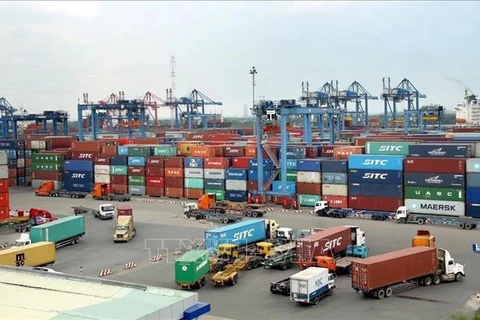Hanoi (VNA) – Vietnam’s economy recovered strongly in 2022 after two years of the COVID-19 pandemic, according to an article published on East Asia Forum website by Professor David Dapice, a senior economist in the Ash Center for Democratic Governance and Innovation at the John F Kennedy School of Government, Harvard University.
According to the article, forecasts show that Vietnam’s Gross Domestic Product (GDP) growth in 2022 was slightly lower than the 8.8% rate in the first nine months of the year.
The country’s exports in the first 11 months of 2022 recorded a higher growth compared to imports with an export growth rate of 13% while 10% for imports, therefore trade surplus was modest. Tourism and production and industry also saw a slight recovery from 2021.
However, the article said slow export orders caused redundancy in factories, and issues related to the real estate sector will be big concerns for the country in 2023.
Professor Dapice acknowledged that Vietnam’s economy has strengths to offset challenges. Inflation was recorded at a single-digit rate. The devaluation of the local currency against the USD was much lower than in many counties, as of early December 2022, the VND only depreciated about 5% against the USD.
With a tight fiscal policy, most Vietnamese banks had abundant capital resources.
High capital inflow and the realisation of foreign investment mean that as the global economy recovers, there will be a transition of labour from low-productivity in agricultural sector to more productive manufacturing sector.
This will increase demand for real estate in cities, despite slower population growth.
Foreign direct investment in the manufacturing sector will support the growth and transition of the country’s economy.
Plans to increase and reduce construction of new coal-fired plants will avoid property stagnation and pollution.
Joining free trade agreements (FTAs) has helped Vietnam penetrate to the world market easier.
According to Professor Dapice, the driving force for the country’s economy in 2023 will no longer be exports or consumer spending, which increased sharply in 2022. Instead, the tourism sector will recover stronger as China has eased its COVID-19 policy along with a strong investment of the government to propel Vietnam’s economy towards its growth target of 6.5% in GDP.
 With an advantage of 3,200 km of coastal line, Vietnam’s tourism sector is forecast to recover. (Photo: VietnamPlus)
With an advantage of 3,200 km of coastal line, Vietnam’s tourism sector is forecast to recover. (Photo: VietnamPlus) This is an ambitious and challenging goal if the world economy or the country’s major export markets such as the US, the EU and China remain unstable.
Some international news agencies such as Reuters and Hong Kong’s Asia Financial website have cited economist warnings that although Vietnam’s economy in 2022 showed the fastest rate in decades, the country faces headwinds ahead with the gloomy outlook of the global economy.
However, the East Asia Forum website quoted Dapice as saying that in 2023, if there are no major natural disasters, it should be possible for Vietnam to keep its economy’s momentum up as long as the global environment improves over the year./.























